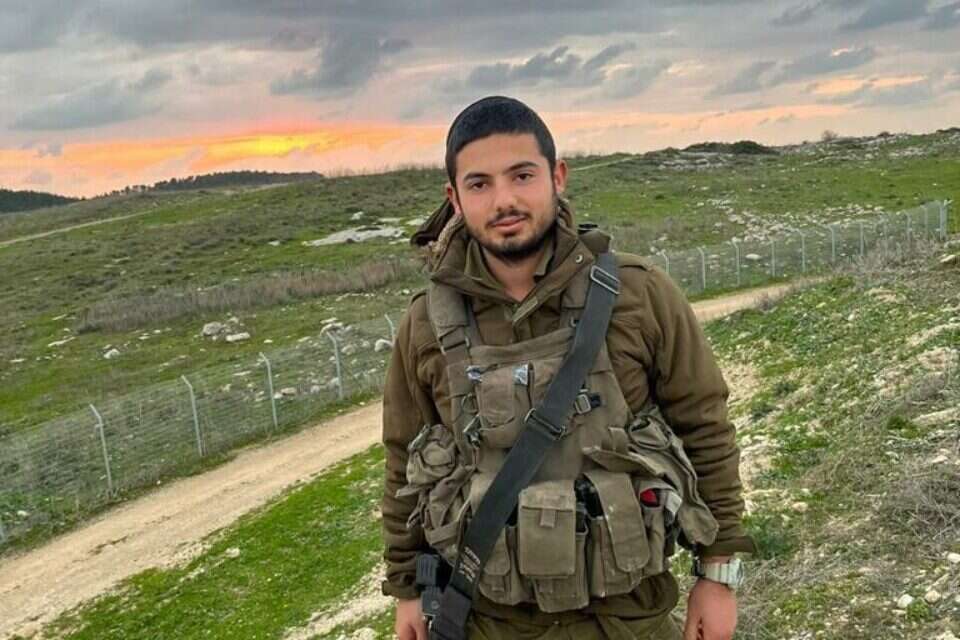Cases of casualties from friendly fire are unnecessary and preventable by their nature, but the death of the late Sergeant Natan Fitosi from the fire of his unit mate raises a long series of questions and doubts regarding the functioning of the two, and the instructions they received from their commanders.
Fitousi and his friend went up yesterday (Sunday) for guarding at 3:00 p.m. in the afternoon.
Their activity lasted eight hours, and they were supposed to finish it at 11:00 PM at night.
This is an activity designed to prevent illegal crossing into Israeli territory in the Seam region - as part of the reinforcement carried out following the attacks that came out of northern Samaria in February-March - and is carried out in pairs so as not to leave a soldier alone.
According to the investigation, around 10:00 PM, Fitousi stepped aside to pray.
His friend says that when he returned, he suspected that he was a terrorist, and carried out a suspicious arrest procedure for him that included shooting in the air, shooting at the legs and then shooting at the center of mass.
But the findings in the investigations conducted yesterday in the field by the division commander, the commanding general and the chief of staff raise quite a few questions regarding this version.
The shooting incident in Samaria in which Natan Fitousi was killed: the Chief of Staff visited the scene // Photo: IDF spokesperson
Eight balls
Contrary to some publications, the shooting soldier did not fire two bullets at Fitosi, but eight (eight cartridges were found in the area, as is also evident from the inspection of his magazine).
Also, he fired while standing, from the waist, when he does not do what is required of a combat fighter - to put the target between the sights, to make sure he hits it accurately.
It is also difficult to understand the lack of coordination between the two soldiers: Pitosi and the sniper soldier served together for two years, since their training in the Kafir Brigade, at the end of which they were assigned together in the Nachshon Regiment.
This was also not their first joint guarding: last Thursday they guarded the area together, and were well briefed on the dangers and rules.
The instructions to open fire, which forbid free shooting at Palestinian civilians, were also made clear to them, and they were supposed to, at the very least, cause doubts in the shooting soldier.
The threat perception is subjective
On the other hand, it is difficult to get into the head of the soldier who shoots: the perception of the threat is often subjective, certainly at night and in a sector where quite a few civilians are walking around, each of whom may be suspected of being a terrorist.
This is where the commanders are supposed to come in, whose job it is to clarify all the unclear points.
As part of this, it is not clear why Pitosi was allowed to pray during an operational activity.
After all, terrorists, if they had carried out surveillance and collected basic information, could have used the minutes of prayer to harm him and his friend.
Worse, the platoon commander had caught up with the two earlier in their operation, and caught Pitosi praying a prayer away from the post.
He warned him and demanded that he be at a smaller distance, but did not demand that he postpone the prayer until after the activity.
Fitosi did listen to his commander, and moved away in the evening to a distance of only 25 meters from his friend to pray - but the question marks remain: was the prayer allowed and approved?
Is such a distance at night, where there is no eye contact between the two, reasonable?
"You tied your destiny with Israel, you will forever be a part of us": hundreds at the funeral of Natan Fitousi who was accidentally shot // Photo: Shmuel Buchris
Criminal negligence?
As always, the investigations will lead to quite a few operational conclusions regarding what is allowed and what is not allowed in pair work in this type of operational activity.
At the same time, the military police will investigate whether there was criminal negligence on the part of the shooting soldier.
His past will also be examined (including disciplinary offenses in the battalion), and the instructions he received in relation to their implementation in the field.
All of these are supposed to help the IDF draw lessons to prevent the next incident. Although there is no connection between the cases, the Central Command counts the second incident this year in which soldiers are killed by friendly fire (in the previous incident, two company commanders in the Agoz unit were killed by shots fired by another officer in the unit). It, at the very least, to refine procedures and review guidelines. The U.S. Department is saturated with risks as well, and there is no need to add such unnecessary harm to them as well.
were we wrong
We will fix it!
If you found an error in the article, we would appreciate it if you shared it with us

